MASS Meeting Notes from the Zoom Meeting on August 28, 2020
We zoomed again. Keith helped as co-host and Beth, Chad, Dave and Harry participated. We also had a special participant, Jim Plaxco, President of the Chicago Society for Space Studies, who added his knowledge on the topics we were discussing.
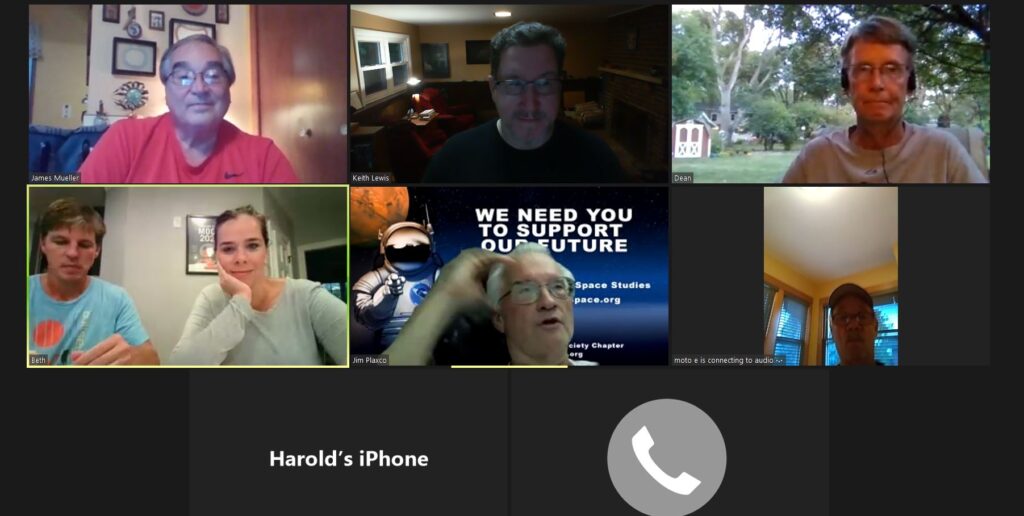
First topic was concern about the Space Camp organization going bankrupt. Beth is a two time graduate, once as a kid and once as an adult, plus she was an instructor there. I graduated with my son-in-law and two grandsons back in April 2014. The article said that they need $1.5 million to keep open until next year. Beth is optimistic that quite a bit of money has already been donated. The Camp has been a great inspiration for many future astronauts and space enthusiasts, so I hope it survives the COVID19 restrictions.
The next topics were about my recent readings. The September, 2020 Astronomy Magazine had a feature article titled, “How We’ll Find Life in the Universe”. As of June 2020, there has been 4274 exoplanets discovered. Scientists think there are 10 to 15 objects in the Solar System that have subsurface oceans. Europa, a moon of Jupiter, has a 6 mile thick ice crust with a 60 mile deep ocean and Enceladus, a moon of Saturn, has a thinner shell of 3 mile thick ice with a 40 mile deep ocean. The Earth’s ocean only averages a little over 2 miles deep. That’s a lot of liquid water available for life to develop. Another interesting object with a liquid substance is Titan, Saturn’s largest moon. This time the liquid is on the surface and it’s methane. Titan is only half our Moon’s diameter but has an atmosphere that is 1.5 times the pressure and 4.5 times the density of Earth’s. It’s composed of 94% nitrogen and 6% methane. The lack of oxygen is why the place doesn’t explode from all the methane. The methane/ethane is liquid on it surface because the temperature is -290 degrees F. Gravity is 14% of Earth and just a little less than the 16% gravity of our Moon. We’ll hear more about Titan in the Angry Astronaut video a couple of topics to come.
Another reading was the book “Light of Stars” by Adam Frank. I learned about the author from Beth’s podcast #78 on June 19, 2020. I bragged a little that I’ve developed the skill of listening to podcasts at 2x speed. It is nice to be able digest an hour podcast during a half hour walk now. I was excited to hear Dr. Frank had a Coursera course titled, “Confronting the Big Questions – Highlights of Modern Astronomy” from the University of Rochester. I quickly signed up for it but was disappointed when I immediately was told that I got a 92 in the class. I had forgotten that I took the course 4 years ago. It’s good that I kept my notes so I could tell that I really enjoyed the class. In his book, he compares some of humanity and their climate change denial to misguided cosmic teenagers. Other subjects deal with the Drake equation which tries to estimate the number of civilizations in the Milky Way Galaxy. Another conjecture is whether there is a “Great Filter” that limits the lifetime or existence of civilizations. This would explain the Fermi Paradox as to why we haven’t seen the aliens yet. There are numerous possibilities for the “Great Filter”, nuclear war, the distance between stars, advanced civilizations stagnating and losing interest in exploration, etc.
Beth added that the “Human to Mars Summit 2020” will be virtual this year and runs from August 31 to September 3. She had its CEO, Chris Carberry, on her podcast and he also participated in one of her book club meet-ups. The full conference is $300 or $75 for a single day and she said she could get people a 10% discount. I’ve seen previous Summits when they get posted to YouTube and the talks are very informative. This year has topics and speakers like, Moon in 2024/Mars in 2033, Managing Planetary Protection, EDL on Mars, In Situ Resource Utilization and Surface Power on the Moon & Mars, Maintaining Human Health on Mars Missions, Selecting Landing Sites on Mars, Creating ECLSS, Kendra Horn of the House of Representatives, Kathy Lueders, Charles Bolden, Alan Stern, Mat Kaplan. I hope to catch the presentations when they are made public.
Another quick topic was the $25 billion package that Congress is considering giving to the Post Office. Every Post Office person I know is very hard working and it is a little hard to believe that we have to give them the same amount of money that NASA gets in its annual budget to keep the mail coming. A stamp costs 50 cents, where is it all that money going? Thanks for letting me have a small rant.
The last miscellaneous topic was a new YouTube discovery of mine called the “Angry Astronaut”. Here’s a guy that gave up his day job and is now making a living with Patreon supporters and monetizing his videos. He has had quite a few interesting videos and I like his props including the ISS in Legos and models of the SpaceX Starship and crew Dragon capsule. He’s a big fan of SpaceX, Bigelow Aerospace and Sierra Nevada but hates the SLS and Orion. Here is a 21 minute video of what he thinks should be our next colonization destination after Mars. Hint: it’s Titan. He thinks we can manufacture plastics for the Solar System economy from the methane there and people wouldn’t need pressure suits to survive there. You just need an oxygen mask and a great parka to keep out the -290 degree F cold. We’d also have the recreation of strapping on wings and flying in the dense atmosphere with 14% gravity. Pretty cool! Saturn also has 82 moons to continue our exploration and resource exploitation.
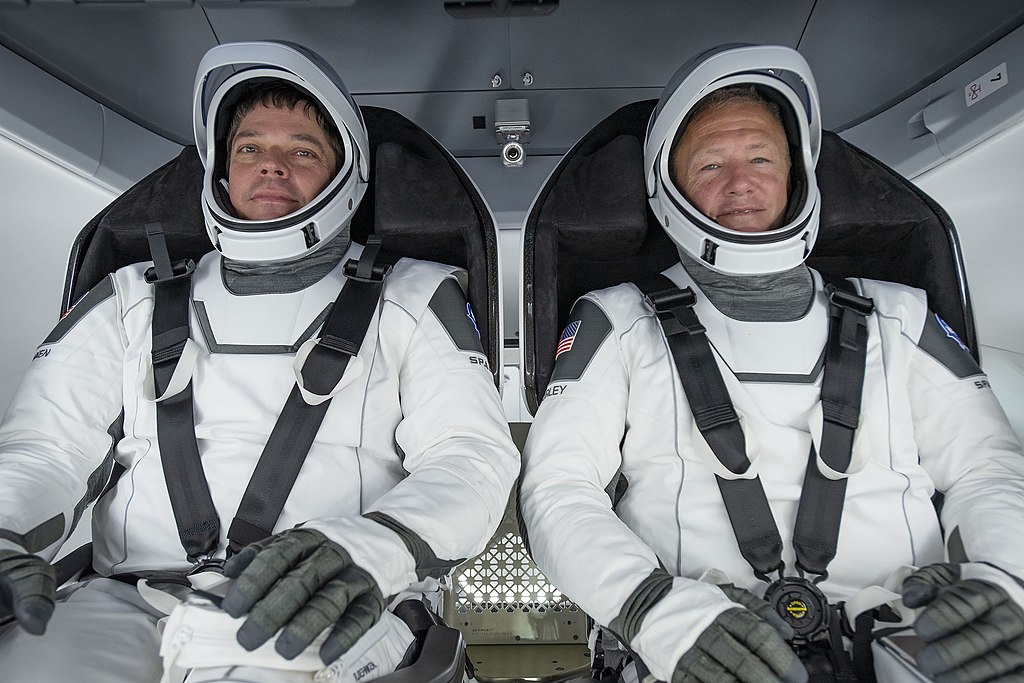
Now to our main topic, the return of the “space dads” from the DM2 SpaceX mission to the ISS. Doug Hurley and Bob Behnken spent 64 days in space and splashed down 40 miles off the coast of Pensacola, Florida. It has been a little over 45 years since the astronauts from the Apollo/Soyuz mission did it on July 24, 1975. I was surprised that the Dragon 2 capsule hits the water at 16 mph which seems fast. But Dean did some research and Apollo capsules actually came down faster at 24.5 mph and Gemini capsules did it at 15 mph and Mercury capsules were the slowest at 11 mph. NASA has a great 1 hour summary of the mission, starting with their riding in their Tesla cars to the launch pad, showing their shinny Apatosaurus dinosaur, Tremor, that one of the kids gave them, to docking, getting the flag in the ISS, performing tons of science while on orbit, Bob doing 4 EVA’s to replace batteries on the ISS, and finally performing the descent and landing. It was amazing how many recreational boaters came out to greet them in the ocean. The boaters were a little bit of a hazard by ignoring the Coast Guard warnings to keep their distance and risking colliding with the capsule or breathing some to the toxic fumes coming from the Dragon capsule descent motors. Nevertheless, the SpaceX boat with 40 people aboard stayed about 3 miles away until the Dragon was in the water. The ship’s crew did a great job of hauling the capsule aboard and carefully extracting the astronauts by gurney to transport them to medical check-ups below deck. The highlights end with Doug and Bob being greeted by one of their sons and they stepped down from the plane in Houston and gave short speeches only 5 hours after returning from space. What a successful mission! It seems like it couldn’t have been more perfect. NASA originally planned for the test mission to only remain in space for a couple of weeks and they spent over 2 months of productive work on the ISS. Kudos to SpaceX and NASA for a successful test mission.
For comparison, the Dragon2 capsule weighs 9525 kg (21,000 lb) and comes down on 4 chutes. The Apollo capsule weighs about half at 5557 kg (12,250 lb) and used only 3 chutes. I thought this might have been the longest space mission with a crew that landed in the ocean but the SkyLab 4 mission which splashed down on February 8, 1974 was in space for 84 days. It is a little amazing to see how the astronauts from SkyLab 4 were expected to crawl out of their Apollo capsule on their own. I also didn’t expect the people extracting them to be wearing masks but I guess that NASA felt that they might have been vulnerable to infection after that amount of time in space. Here is the video clip of the astronaut extraction.
The next step for SpaceX is to launch the CREW1 operational mission to ISS with 4 astronauts. The date for the launch has been pushed back to Oct 23, 2020 so that the Russians can launch Kate Rubins with 2 Russian cosmonauts on a Soyuz capsule to the ISS on October 14, 2020 and Chris Cassidy can come back to a landing in Kazakhstan on October 21. It will be great when the US has 5 astronauts on the ISS. The amount of science they will be able to perform will go up astronomically. CREW1 is expected to stay on the ISS for the nominal 6 month mission duration and includes Shannon Walker, Victor Glover, Mike Hopkins and Japanese, JAXA astronaut, Soichi Noguchi.
Marcus House has a very informative 17 minute video that includes discussion of the new Pentagon awards to ULA and SpaceX for rocket launches, progress on the Starship prototypes down in Boca Chica, Texas, more information on the DM2 and CREW1 & CREW2 missions. You just have to skip thru a couple of his commercials.
ULA got 60% of the DoD launches between 2022 and 2027 and SpaceX got 40%. Northrup Grumman and Blue Origin got shut out. But since ULA will use the new Vulcan rocket for the launches and Blue Origin is providing the BE-4 methane burning engines for it and Northrup Grumman will provide the solid rocket boosters, those companies will also be getting a piece of the pie. Northrup did threaten that they will drop development of their solid rocket patterned after one of the boosters from the Space Shuttle because they didn’t get any launches. The 3 dozen launches awarded are said to be worth about $1 billion per year for the 5 years of 2022 to 2027. Two years ago, the Air Force gave ULA $967 million to develop the Vulcan rocket, Northrup got $792 million for the Omega and Blue Origin got $500 million for the New Glenn rocket. SpaceX got nothing for their rocket development. It seems the Falcon 9 and Falcon Heavy rockets just keep getting to be a better buy for the US taxpayer.
SpaceX’s development of the StarShip and Super Heavy rocket is pretty much all being developed by Elon Musk within SpaceX. It is hard to get the Defense Department to buy into his idea of settling Mars. But he is getting a little help from NASA to develop a human rated lunar lander with a customized Lunar StarShip. Super Heavy will be a beast of a rocket with 31 of his new Raptor methane burning rocket engines. Super Heavy with StarShip on top will be capable of putting 100 metric tons (220,000 lb) into orbit and with refueling in orbit, sending those 100 tons to destinations like the moon or Mars.
The SN5 prototype StarShip is pretty ungainly looking. It looks like a flying grain silo. With that 20 ton cube of steel on top and only 1 Raptor engine, it shows what Super Heavy will be able to do with 31 Raptors and Starship with 3 Raptors for sea-level operation and 3 Raptors optimized for vacuum use. To show how far SpaceX has come in development, here is the original StarHopper flight from August 27, 2019. This was again with just one Raptor engine but more of a flying water tower on its 150 meter hop.
Our next topic was Mars and the Perseverance rover heading to Jezero crater. Perseverance is based on the Curiosity rover design that is already on Mars but it will have a much more focused search for ancient Mars life. The rocks in Jezero crater are much older than the Gale crater ones that Curiosity examined. They date to 3.5 to 4 billion years ago when Mars had surface water and an atmosphere. The river delta in Jezero attests to that and the crater is thought to have had a 800 ft deep lake for millions of years. The green shaded rocks in the picture of Jezero indicate rocks that have carbon in them. Carbon containing rocks could have fossilized life. The Ramen spectrometers on Perseverance are the ideal devices to analyze these carbon compounds in the rocks. Current life on the surface of Mars is improbable. The cold temperatures, surface radiation, dryness, lack of atmosphere and perchlorate compounds in the soil are all hindrances to surface life. But Perseverance is prepared to drill core samples up to 3 inches into the rock to see what was there 4 billion years ago when the conditions were different. Perseverance will land on the flatter area toward the center of the crater. But scientists want to get it as close to the river delta as possible because driving distance means lost time to the mission. The Ingenuity helicopter will help scout the best driving route from its higher viewpoint on its 5 short test flights. Here is a video that shows the suggested driving path from pictures taken from orbit.
On Earth, stromatolites are the oldest fossilized life. Some of them date back to 3.4 billion year ago in reddish Australian rock (some claim 3.7 billion years old) that looks surprising like the surface of Mars. Scientists have even found living stromatolites. Some of the stromatolites, like these from the Cambrian period 490-541 million years ago, look about the same as the current and 4 billion year old ones. It must of been a good design for life to remain relatively unchanged for 4 billion years. Here is a map showing all the spacecraft landing sites across Mars. Perseverance is labeled Mars2020. Pathfinder, Spirit, Opportunity and Curiosity are all previous rovers. The others are static landers. So far the US is the only country to make a successful landing. Other countries had made a few new craters but didn’t land anything that could still operate.

Our last topic about Mars concerned the Insight “mole” that is trying to drill down through the soil. It had been a tough go for the German designed device. The Mars soil is not providing enough friction for the self-driving nail-like probe to make progress. It has successfully buried itself fully in the ground with the help of the robotic arm pressing on it. The probe is 40 cm (16 inches) long and has entered the ground at a 30 degree angle. If my trigonometry is correct that would place it about 14 inches deep. Here is a picture from August 8 showing the status. Scientists will press on the soil above the probe and then see if it can make more progress and get deeper. Dean had the most pessimistic guess of the MASS group on how deep it will finally get with 42 inches. I think he is probably going to win the 3 Mars candy bars prize.
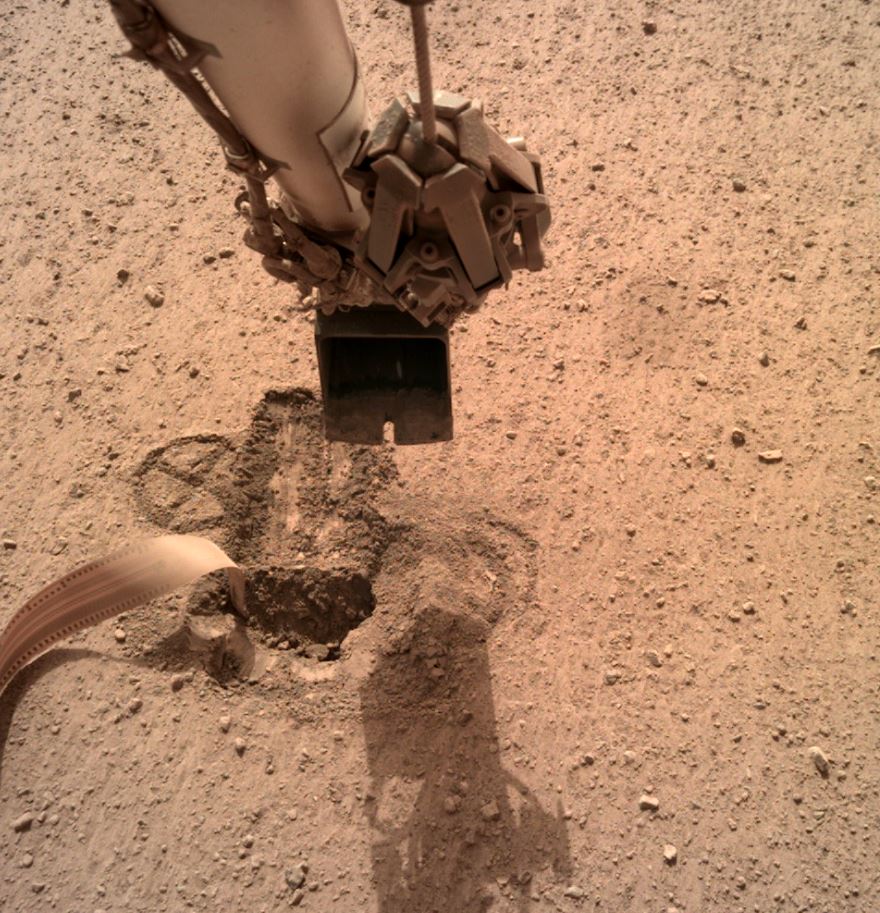
In NASA topics we discussed,
The new record set by the Voyager 1 spacecraft. It has now reached 150 AU (AU are astronomical units, 1AU = the Earth-Sun distance). 150 AU is about 14 billion miles from Earth. The probe was launched in 1977. On August 1, 2012, it became the first object to leave the inner Solar System and pass into the heliosheath and experience more of the galactic medium rather than only the Sun’s influence within the heliosphere. Voyager 2, its sister ship, performed the Grand Tour of sweeping past Jupiter, Saturn, Uranus and Neptune, and is leaving the Solar System a little slower, now only 125 AU distant. Voyager 1 only visited Jupiter and Saturn. You can follow the distance in real-time by watching the Voyager home site. It will take Voyager 1 300 more years to reach the Oort Cloud (2000 to 100,000 AU distant from the Sun). The Oort Cloud is home of the halo of comets that surrounds the Sun out to about half way to the nearest star. It takes light 20 hours to reach Voyager 1 from Earth and 17 hours to reach Voyager 2. Both space probes have the Golden Record attached to their sides. It is a 12 inch disk containing images and greetings in 55 languages that was designed by Carl Sagan. Voyager has had a profound impact on pop culture with references in Startrek, X-Files, etc. Hopefully, the aliens haven’t thrown away all their turntables so they can play the record. Another aspect of Voyager is the “Pale Blue Dot” picture taken when it was in the outer Solar System. The picture was the inspiration for which Sagan made this moving speech.
Juno space craft captures interesting Jupiter mush balls and lightning – Here is an animation video and diagrams of the mushball creation. Lightning on Jupiter comes from ammonia-water clouds and there are slushy ammonia rich hailstones called mushballs. Juno just celebrated in 4th anniversary of arrival at Jupiter on July 4, 2016. So far it has performed 27 science flybys.
Green Run Test has 4 of 8 items completed – NASA having paused testing with a hurricane coming, the 8 minute test firing probably will occur in November. The first stage of SLS is the largest core stage ever built at 212 ft. It dwarfs the 138 ft tall first stage of the Saturn V. I never saw a rocket with pipes going down the sides of it. The web site has a nice 4 minute video titled “1st SLS Moon Rocket Installed for test firing” showing the technicians erecting it on the test stand. Beth got to see this core stage in person! The 4 RS-25 core stage engines from the Space Shuttle will provide only 25% of the first stage thrust (1.6 million lbs of the total 8.8 million lbs). The rest comes from the 2 solid rocket boosters. The total thrust is a 15% increase over the Saturn V. The fact that SLS burns liquid hydrogen makes the tank so large. Liquid hydrogen is not a very dense substance, so you need a big volume. The Saturn V burned kerosene which gave it more lift capacity with smaller tanks. The first launch of SLS will be the Artemis 1 mission. It will send an uncrewed Orion capsule in a figure eight around the moon and then back to a splashdown in the ocean. It is still scheduled for launch in late 2021.
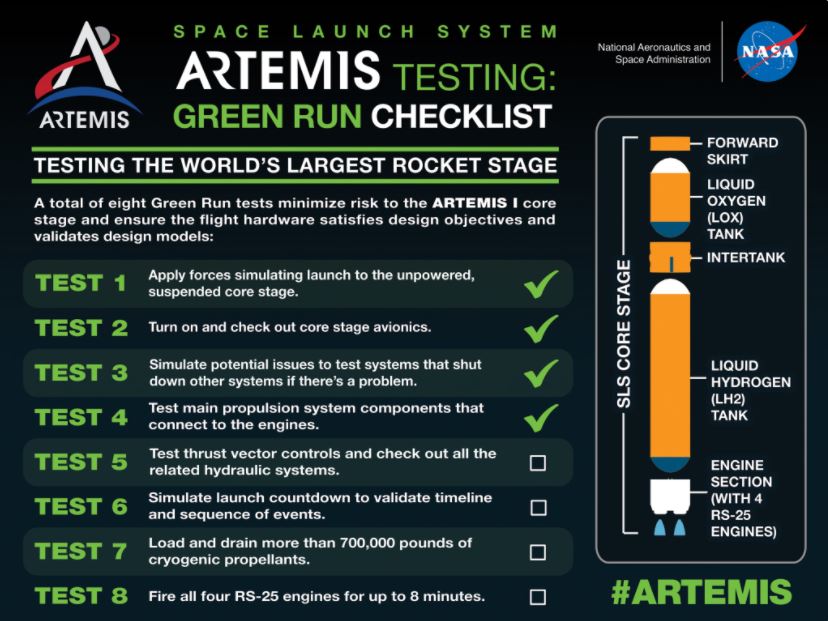
TESS completes its primary mission – After 2 years of operation it has completed its first all sky survey which covered the brightest stars in about 75% of the sky. It will now embark on another 2 year go round of the sky. It has a new capability of capturing a full image every 10 minutes which is 3x faster than before and a new fast mode that allows thousands of stars to be measured every 20 seconds (used to be only every 2 minutes). TESS was estimated to find 20,000 new exoplanets (dozens of them earth-sized and up to 500 exoplanets less than 2x earth size). Actual results so far are 66 new exoplanets and 2100 candidates. Kepler, the original exoplanet discovery space craft, was declared dead in Oct 2018. It found 2/3 of the 4200 exoplanets discovered to date. Kepler found 2800 exoplanets and 3000 additional candidates. TESS was capped as a $200 million mission not including the $87 million in launch costs. Adding an extra year shouldn’t be too expensive, an extra year for New Horizons Pluto/Arrokoth probe only cost less than $15 million.

Osiris-Rex practices its sampling procedure – On August 12 the spacecraft came within 40 meters (131 ft) of the surface of Bennu, extended its sampling arm and activated its hazard warning system. Because it is 179 million miles from Earth, signals take 16 minutes to reach it. The maneuver was entirely automated. The actual sample attempt will be on October 20. The spacecraft is scheduled to return the sample to Earth on September 24, 2023.
Meet Dynetics, the 3rd company building a manned lunar lander – The company is 50 years old and has done a wide array of work for the Pentagon and NASA. But I never heard of them. It is based in Huntsville, Alabama and recently became a subsidiary of Leidos with a $1.7 billion cash deal. The plan for their first lander mission is to carry 2 astronauts on their final leg to the moon’s surface from the Lunar Gateway or just from the Orion capsule in orbit around the moon. The crew will stay 6 days on the surface (eventually capable of up to a 42 day stay with 4 astronauts). The spacecraft is called ALPACA (Autonomous Logistics Platform for All-moon Cargo Access). It has 8 engines (4 on each side) to descend and ascend from the moon. It would use ULA Vulcan rockets to get in orbit. The entire vehicle would require 3 launches, 1 for the spacecraft and 2 for its propellant tanks. The launches would be spaced out over a month. The components would be assembled in orbit and then take a 3 month journey to lunar orbit. The other 2 lunar landers that are being created are from SpaceX with its lunar optimized Starship and Blue Origin with its Blue Moon lander. Blue Origin is partnering with Lockheed Martin, Northrop Grumman and Draper for its development. NASA’s Human Landing System (HLS) program is modeled after the Commercial Crew program. In the program, SpaceX gets $135 million, Dynetics $253 million and Blue Origin $579 million to mature their designs over the next 11 months. NASA gave Dynetics the highest mark among the teams. Dynetics has its own team with ULA, Maxar, Astrobotic and Sierra Nevada. ALPACA is partially reusable. The outboard fuel tanks are expended and the lander section is left on the moon. Only the ascent module would be available for another mission. The first test mission to the moon will be unmanned. The 2 outside fuel tanks are launched separately and are dropped during descent. Here is a 1.5 minute video of operation. Blue Origin recently delivered a mock-up of the Blue Moon to NASA for evaluation. It is over 40 feet tall and includes the ascent and descent modules.
In rocket topics we discussed,
SpaceX achieves new record of launching and landing a booster for the 6th time – Elon Musk will push to use a booster 10 times and then with some parts replacement, try for another 10 uses until he gets the rocket used 100 times. At least that is the stated goal. The Starlink10 launch was the 11th launch of StarLink satellites. It put another 58 of them in orbit. They join the 531 V1.0 ones already in orbit. Four of the StarLinks have already had problems and reentered the atmosphere, so the total in orbit is now 589. The original batch of 60 were on the Starlink0 launch were an earlier version of v0.9 and won’t be part of the final system. Of the 60 on the original launch, 4 have reentered and the others are in decaying orbits. During the Starlink10 launch, SpaceX caught one of the fairings with its “net” boat and recovered the other after a soft splashdown. It was SpaceX’s 14th launch of the year. Nine of the launches have been for Starlink. The video makes fairing catch look easy. The “Loveboat” music in the background makes the short video entertaining. SpaceX said they were using some new autopilot capability that has the boat steering linked to the parasail controls. Catching a fairing half is a $3 million savings. The full fairing is about 10% the cost of the Falcon9 rocket. When SpaceX uses the Falcon9 in recovery mode, there is a 40% hit on payload mass to orbit to accommodate the fuel needed to land the booster.
Rocket Lab determines its anomaly – On July 4 their engine shut down and the payload did not reach orbit on their 13th launch attempt from New Zealand. Now the FAA has cleared the American company to resume launches. A single electrical connection that evaded pre-flight testing failed and caused the rocket motor to shut down. Rocket Lab is slated to launch a micro satellite for the Air Force Research Lab Monolith program in late August or early September from Wallops in Virginia. Michael Griffin, an ex head of NASA has joined the company. I’m not a super fan of him because he is so entrenched in the military aspect of space and has a close relationship with the current Administration. He resigned as the Undersecretary of Defense for Research & Engineering. His last day at the Pentagon was July 10. He was NASA administrator from 2005 to 2009 and oversaw development of Constellation program, the precursor to SLS and Orion, and the start of Commercial Cargo program.
Astra is getting ready for another launch attempt – On August 2 they attempted a launch from PSCA (Pacific Spaceport Complex located in Kodiak, Alaska) but were stopped by a wayward boat. Their new Rocket 3.1 is an improvement over the original design which failed twice during the DARPA launch challenge which had a $12 million prize. The challenge would award for the 1st launch $2 million and the second launch, from a different site, $10 million. The challenge was to show that you could rapidly launch from separate places into orbit during then Feb-Mar 2020 time-frame. Astra’s rocket can deliver 150 kg (330#) payload to a 310 mile sun-synchronous orbit. The Alameda, California company has been very secretive but in early 2020 they went public. They revealed that their rocket is a 2-stage rocket with the 1st stage using RP-1 & LOX with 5 engines and electrically driven turbo-pumps like Rocket Lab’s Electron rocket. It is designed with simplicity and portability. The rocket has aluminum fuel tanks and its size allows it to be placed in standard shipping containers for transport. I’m not sure it is a good thing for an orbital class rocket to fit in standard shipping containers. What if it gets accidentally sent to North Korea or Iran? Astra also plans to activate a 2nd launch site in the Marshall Islands. They claim to have over a dozen launch contracts signed. The 17 second video shows the rocket during a hold down test firing but it seems a little humorous the way the water spray comes out at the end. Or is it just me?
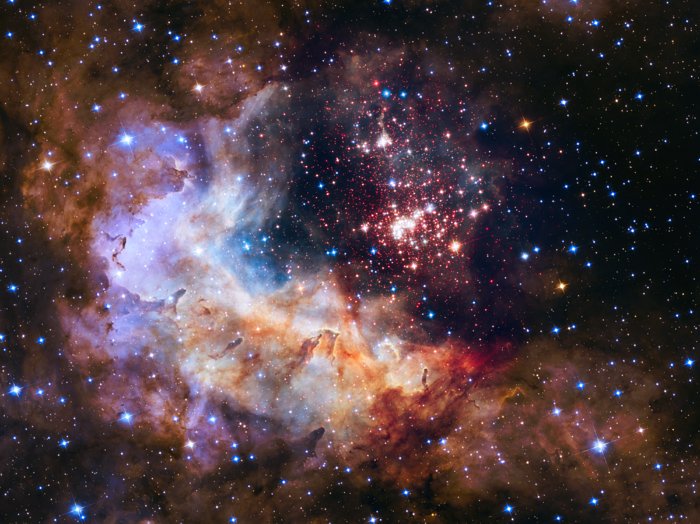
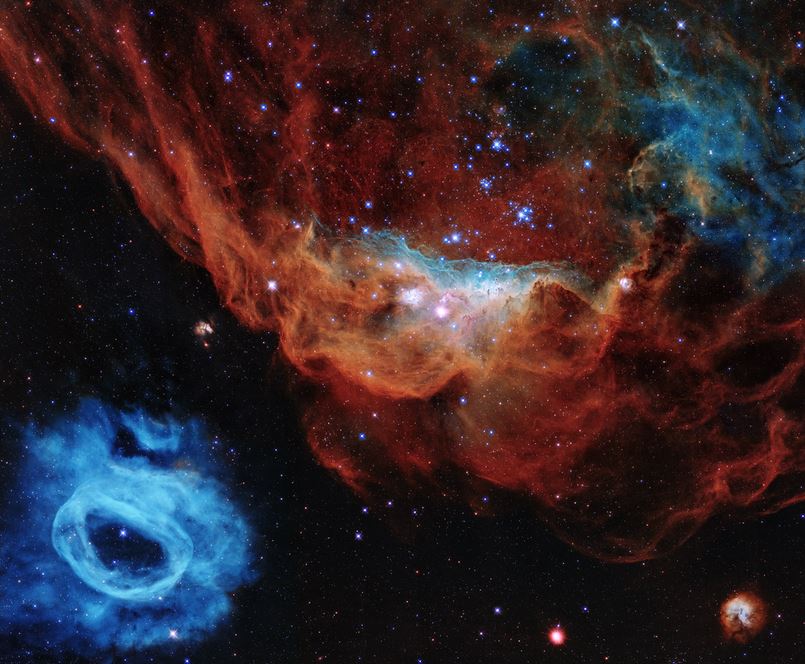
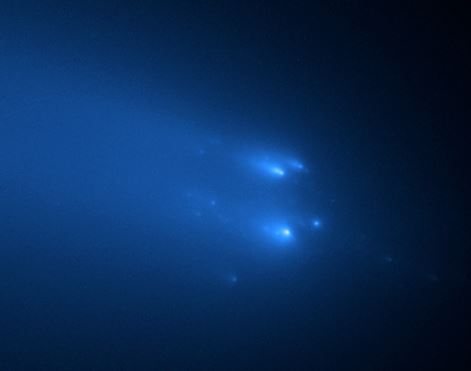
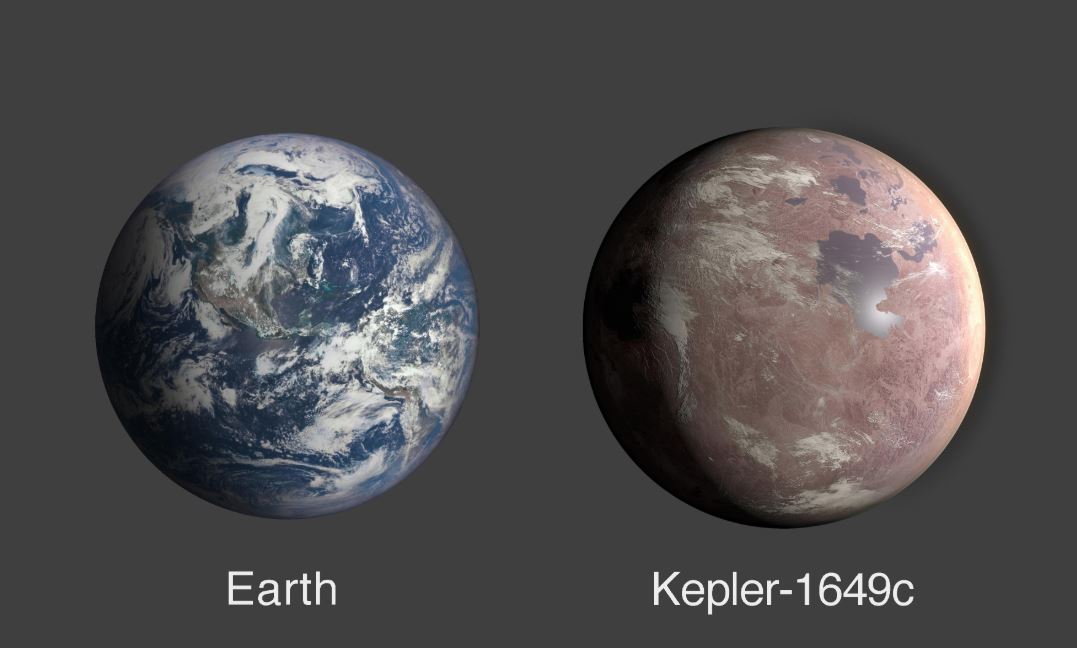
Recent Comments